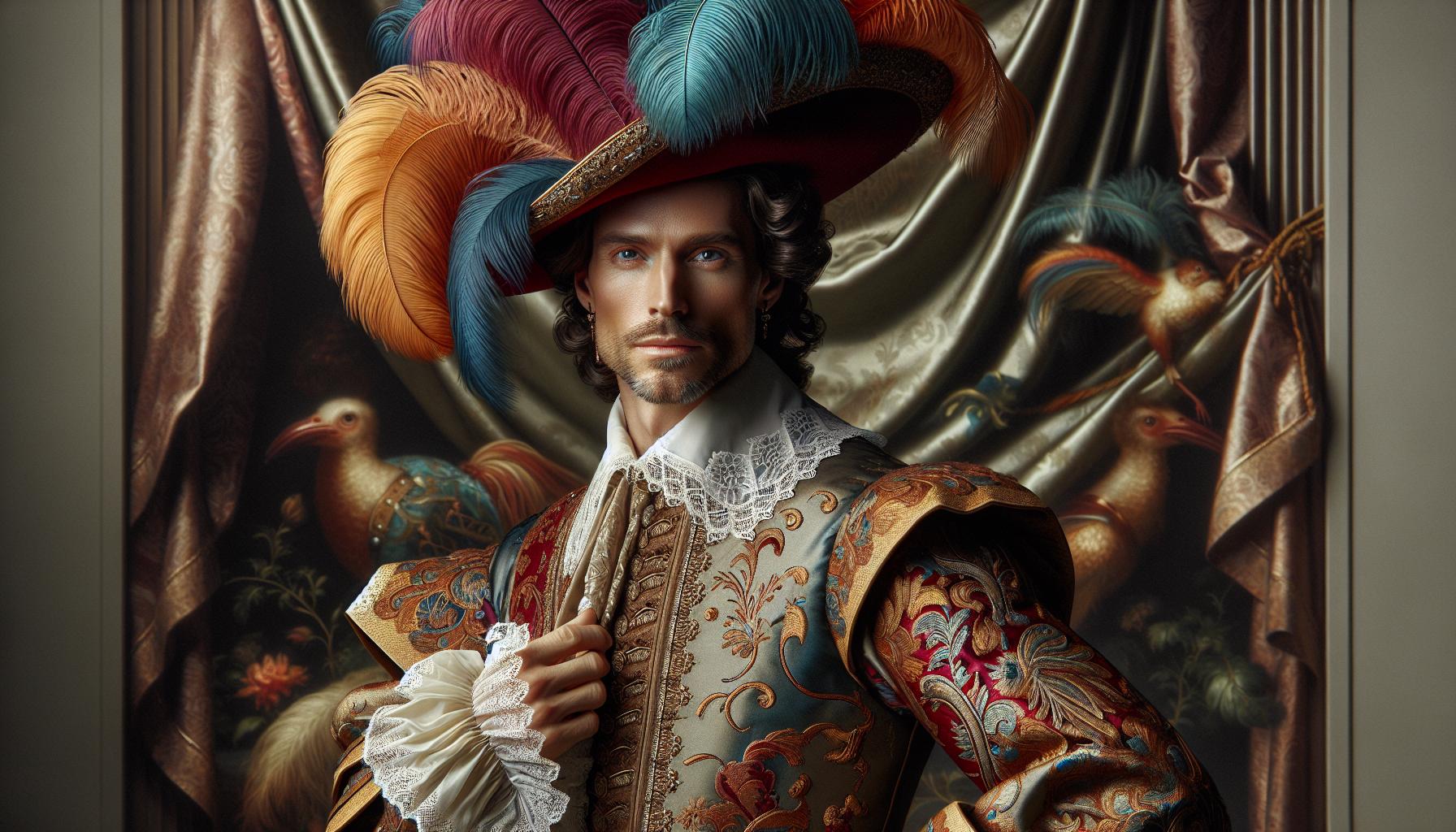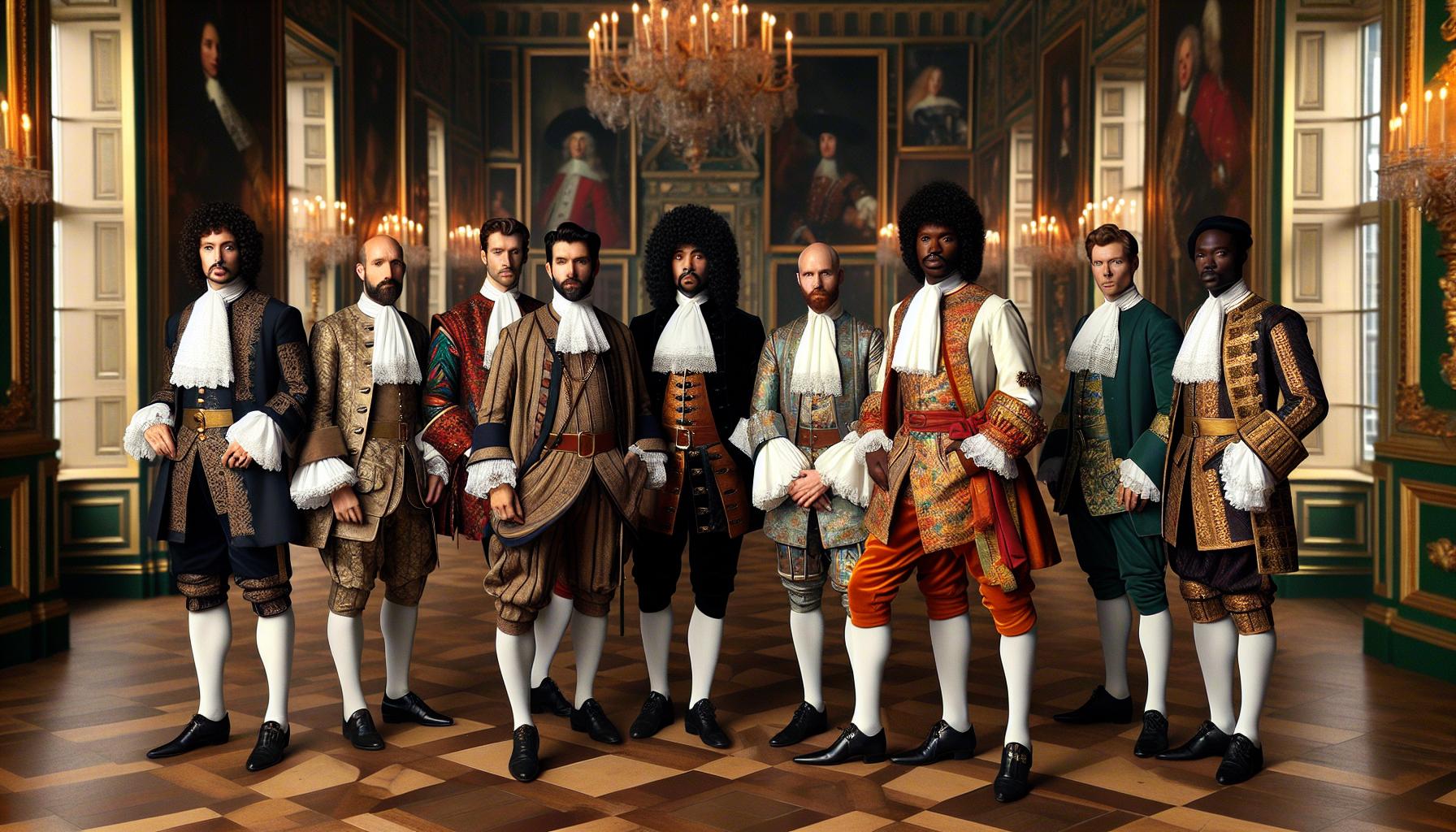Step into the world of the 17th century, where men’s fashion was anything but boring. Picture this: ruffled collars that could double as a sail, breeches that hugged the thighs just right, and shoes with heels that would make even modern-day fashionistas raise an eyebrow. This was a time when a man’s wardrobe spoke volumes about his social status, ambitions, and perhaps his ability to navigate a crowded ballroom without tripping over his own lace.
But let’s be honest, while the outfits were extravagant, they weren’t exactly practical. Who wouldn’t want to strut around in a doublet that could double as armor? Join us as we unravel the flamboyant fabrics, daring designs, and the occasional fashion faux pas that defined 17th century men’s fashion. It’s a journey through time that’s sure to tickle the funny bone while shedding light on the sartorial choices of a bygone era.
17th Century Men’s Fashion
17th-century men’s fashion showcased opulent styles that left a lasting impression. Ruffled collars became a signature element, often elaborately constructed and accentuating the neckline. Breeches were tailored to be form-fitting, emphasizing the male silhouette while allowing for ease of movement.
Fabric choice played a significant role; rich materials like silk, velvet, and brocade dominated attire. These fabrics were often adorned with vibrant colors and intricate patterns, denoting the wearer’s wealth and social standing. Heeled shoes provided an elevated appearance, contributing to a more grandiose aesthetic.
Accessories were no less important. Large hats adorned with feathers, ribbons, and lace signified elegance and flair. Gloves, often made from fine leather, complemented outfits while maintaining an air of sophistication. Jewelry, including rings and brooches, added a personal touch, reflecting individual tastes.
Men’s garments often featured innovative designs. Doublet styles evolved, incorporating fitted cuts and elaborate details. Capes served both functional and decorative purposes, adding layers to the ensemble. Trends also fluctuated based on regional influences, creating variations in style across Europe.
Socio-political changes impacted fashion trends. The rise of the middle class led to greater access to fashionable attire. As trade expanded, fabrics and accessories from different cultures became more available, influencing local fashion in unprecedented ways.
Overall, 17th-century men’s fashion was a vivid expression of identity, ambition, and societal norms. This extravagant period reflected a deep connection between clothing and status, shaping how men presented themselves in public and private spheres.
Key Trends in 17th Century Men’s Fashion

17th-century men’s fashion showcased a blend of opulence and innovation. Men approached style with a focus on extravagant materials and vibrant colors.
Fabrics and Materials
Silk, velvet, and brocade defined the era’s fabrics. These luxurious materials signified wealth and social rank. Tailoring emphasized the body, enhancing silhouette features. Textiles often featured intricate patterns, showcasing craftsmanship. Cotton became more common toward the century’s end, marking a shift in material availability. Regional variations introduced unique fabrics, highlighting local resources. Innovations like embroidered details and embellishments enriched the overall aesthetic.
Color Palettes
Bold colors dominated men’s fashion in the 17th century. Deep reds, royal blues, and rich greens were particularly popular. Pastel shades like soft pinks emerged later, creating contrasts in styles. Color symbolism played a critical role; certain hues indicated social status. The combination of rich tones and intricate embroidery elevated garments. Seasonal trends influenced color choices, reflecting cultural and political climates. Accessories often complemented main outfits, adding to the visual appeal.
Influential Styles of the Era

17th-century men’s fashion showcased a unique combination of innovation and extravagance. Each garment played a vital role in expressing identity and social status.
The Doublet
The doublet was a foundational garment. Fitted to the body, this waist-length garment accentuated the male silhouette. Styles varied significantly, featuring elements like buttons, slashing, and embroidery. Florid designs emerged, often highlighting the wearer’s wealth through rich fabrics like silk or brocade. The popularity of the doublet remained strong throughout the century, evolving in response to shifting fashion trends. Tailoring techniques improved, allowing for more intricate construction and flattering fits.
The Breeches
Breeches marked a significant departure from previous styles. Often knee-length, these trousers emphasized mobility and comfort. Fabrics included wool and silk, reflecting both practicality and luxury. In addition, waistband designs and decorative elements like ribbons varied among social classes. The breeches’ silhouette evolved, sometimes becoming more loose-fitting, aligning with contemporary tastes. Color choices ranged widely, showcasing vibrant shades that indicated wealth and status.
The Cape
Caped garments added layers of grandeur. Typically worn over the doublet, capes provided warmth and an eye-catching focal point. Styles ranged from simple cuts to lavishly decorated versions adorned with intricate embroidery. Colors varied from muted tones to bold hues, often influenced by regional trends. Commonly made from wool or velvet, capes served both functional and decorative purposes. Tailoring allowed for diverse lengths and fits, enhancing their versatility in men’s fashion. Additional embellishments, such as fur linings, featured prominently among the elite.
Accessories and Details

Accessories played a crucial role in 17th-century men’s fashion, enhancing overall appearance. Highlighted details included footwear and headgear, both of which conveyed status and style.
Footwear
Footwear in the 17th century featured ornate designs and impressive craftsmanship. Shoes, often made from leather, displayed vibrant colors such as red and black. Heeled shoes gained popularity, reflecting a man’s social alignment and wealth. Some styles included delicate embroidery, showcasing artistry and skill. Lace-up boots also emerged, appealing to those desiring comfort and practicality. Men often teamed shoes with decorative buckles, which became a fashionable statement piece, adding flair to their ensembles.
Hats and Headgear
Hats and headgear served as essential accessories throughout the century. Large feathered hats commanded attention and exemplified wealth. Styles ranged from broad-brimmed types to more fitted designs, each adorned with luxurious embellishments. Decorative ribbons and jewels often accentuated these hats, elevating a man’s outfit. Additionally, some men favored berets, offering a more casual yet fashionable option. These accessories complemented the extravagant clothing styles, reinforcing a man’s identity within society.
Cultural Influences on Fashion
Cultural influences significantly shaped men’s fashion in the 17th century, with royal tastes often dictating style trends. Wealthy patrons set the standard for lavish garments, prompting aspiring nobles and gentry to emulate their looks. Monarchs like Louis XIV of France popularized extravagant styles, including lace embellishments and sumptuous fabrics, elevating fashion to a symbol of power and prestige. Influenced by court culture, men donned finery to align with the elite, promoting a more ostentatious appearance throughout Europe.
Royal Influence
Royal courts inspired major fashion trends during this period. The opulent garments worn by royalty showcased rich materials like silk and brocade. These luxurious choices trickled down to fashionable circles, influencing how men dressed in everyday life. Ruffled collars, vibrant colors, and intricate embroidery mirrored the styles seen in royal palaces. As a result, clothing became a visible marker of social rank. The desire to impress saw many adopting similar garments, hoping to capture a fraction of royal allure.
Regional Variations
Regional variations in 17th-century men’s fashion reflected local customs and economic conditions. Countries like England, France, and Italy each displayed distinct styles influenced by their unique cultures. English fashion often emphasized practicality and comfort, while French styles showcased elaborate designs and luxurious fabrics. Italian garments highlighted craftsmanship, emphasizing tailored fits that flattered the male form. Local materials often dictated fashion choices, further diversifying styles across regions. This regional diversity enriched the fashion landscape, allowing for a captivating blend of trends and innovations.
17th-century men’s fashion stands as a testament to the era’s creativity and ambition. The bold styles and luxurious fabrics not only defined individual identity but also reflected societal hierarchies. With an emphasis on opulence and intricate detailing, these garments showcased a man’s status and aspirations.
As trends evolved throughout the century, the interplay between culture and fashion became evident. The influence of royalty and regional variations enriched the fashion landscape, leaving an indelible mark on subsequent styles. Ultimately, the extravagant choices of this period continue to inspire modern fashion, reminding us of the ever-changing nature of sartorial expression.

